The analysis of competitor prices is an undivided part of the means aimed at increasing the profits of an online store. With the emergence of marketplaces, the number of new sellers is springing up like mushrooms, and that is convenient for buyers. However, the situation is different for business owners and retailers as it becomes more and more difficult to defend the place in the sun. Under these circumstances, market monitoring and price analysis have become a flagship in a competition struggle for consumers.
The main condition of choosing a product or shop is the attractiveness of the offer. And prices come in the first place here. Sure, if you have a possibility and funds, you may conduct the complete analysis of competitors, as they say, ‘on all fronts’, having extended it for months or years on. But for the prevailing majority of customers, the competitiveness of prices on the marketplace becomes a defining factor when choosing an online store. And this is what the focus should be put on.
The plan
1. What competitor price analysis is and its place in overall competitor analysis
2. Types of competitors for tracking
3. How to search for your competitors
4. Competitor search automation
5. Methods used to collect competitor prices
6. How to use competitor price and goods analysis
7. Competitive pricing and goods revaluation
8. Types of competitive pricing strategies
9. Advantages of competitive pricing
10. The benefit of historical data for increasing the profit of an online store
11. How often it is required to conduct competitor pricing analysis and goods revaluation
12. How to choose a service to analyze competitor pricing
The owners of online stores and their marketers constantly search for new methods to increase sales and profits. And correctly adjusted analytics as well as studying the customer behavior help them in it. One of the most recent researches in this field is the survey conducted by Digital Commerce 360 and Bizrate Insights that reflects the latest world tendencies.
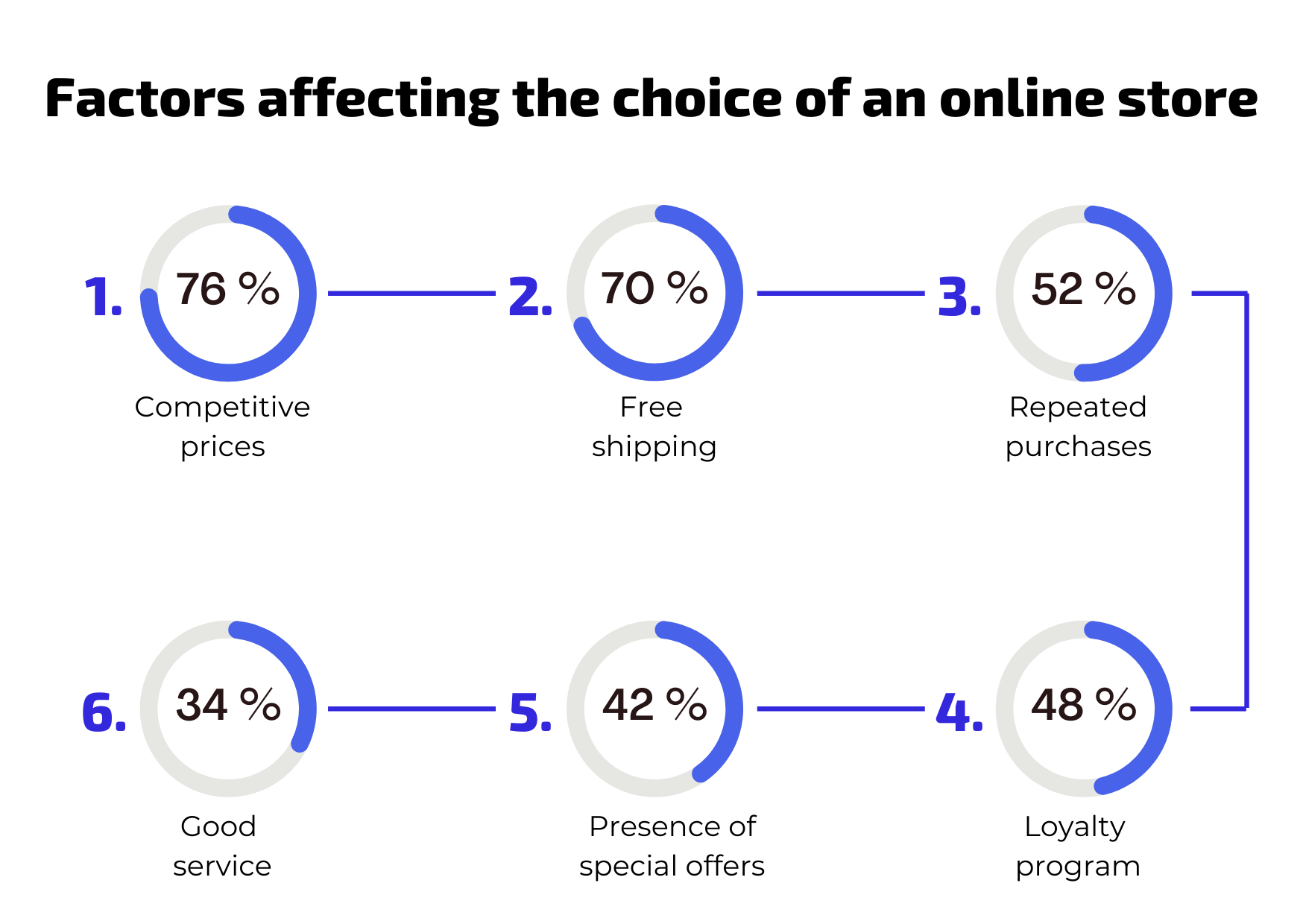
Top 10 factors that become defining for consumers (according to the research):
1) Competitive prices
2) Free shipping
3) Repeated purchases
4) Good service
5) Presence of special offers
6) Loyalty program
7) Seller’s reputation
8) A great choice of products
9) Photos and product descriptions
10) Reviews
When evaluating this research, we should point out the difference between American and post-Soviet consumers. Considering the difference in the ability to pay, the percentage of people in post-Soviet countries for whom the price becomes a defining factor is even higher. It follows that regular monitoring and prices analysis are a ‘must-have’ for any business.
What competitor price analysis is and its place in overall competitor analysis
The reality is that before buying a product on the Internet, a future buyer does his own market monitoring consisting of three stages:
1) a choice of the product model depending on specific criteria
2) the price analysis of this model in online stores
3) the choice of a particular shop and a purchase in it
Thus, if you don’t analyze the prices in the market, then the buyers themselves or your competitors to whom the customers will defect to will do that. Since according to Google researches, 87% of interviewed buyers, when choosing a brand or online shop, are guided by their benefit, or the cost in other words.
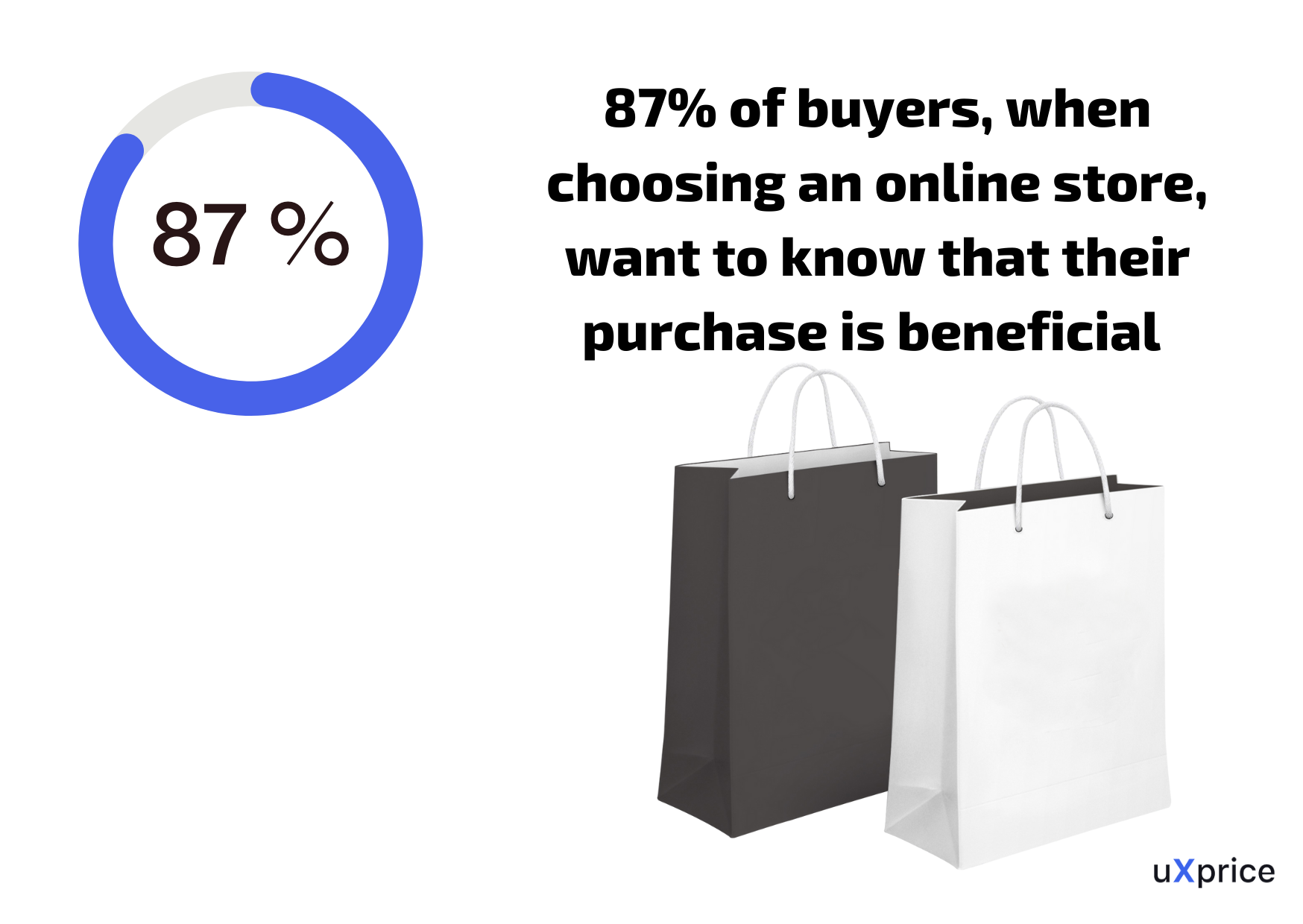
Competitor prices analysis is a comparison of pricing strategies of competitors in general and by different groups of goods (for example, categories) to evaluate your competitiveness and build your efficient pricing strategy both in the short and long run. It gives you an understanding of the strong and weak points of your online store for using the existing advantages and overcoming the existing barriers preventing sales growth.
Competitor pricing analysis for online stores is one of the most important components of the overall competitive analysis and is usually executed separately from the rest of the stages by category managers. Nevertheless, this is not a single criterion that should be analyzed from your competitors. Some other significant things affect the conversion percentage (purchases):
1) design of a website and its mobile version adaptivity
2) tools for product search on the website, division into categories, uniqueness of images, descriptions of products and categories, mobile UX, presence in social media
3) customer journey: the simplicity of order processing and payment, communication with managers
4) presence of special offers and periodicity of sales
5) e-mails
6) reviews of customers about the shop and goods
7) unique selling proposition
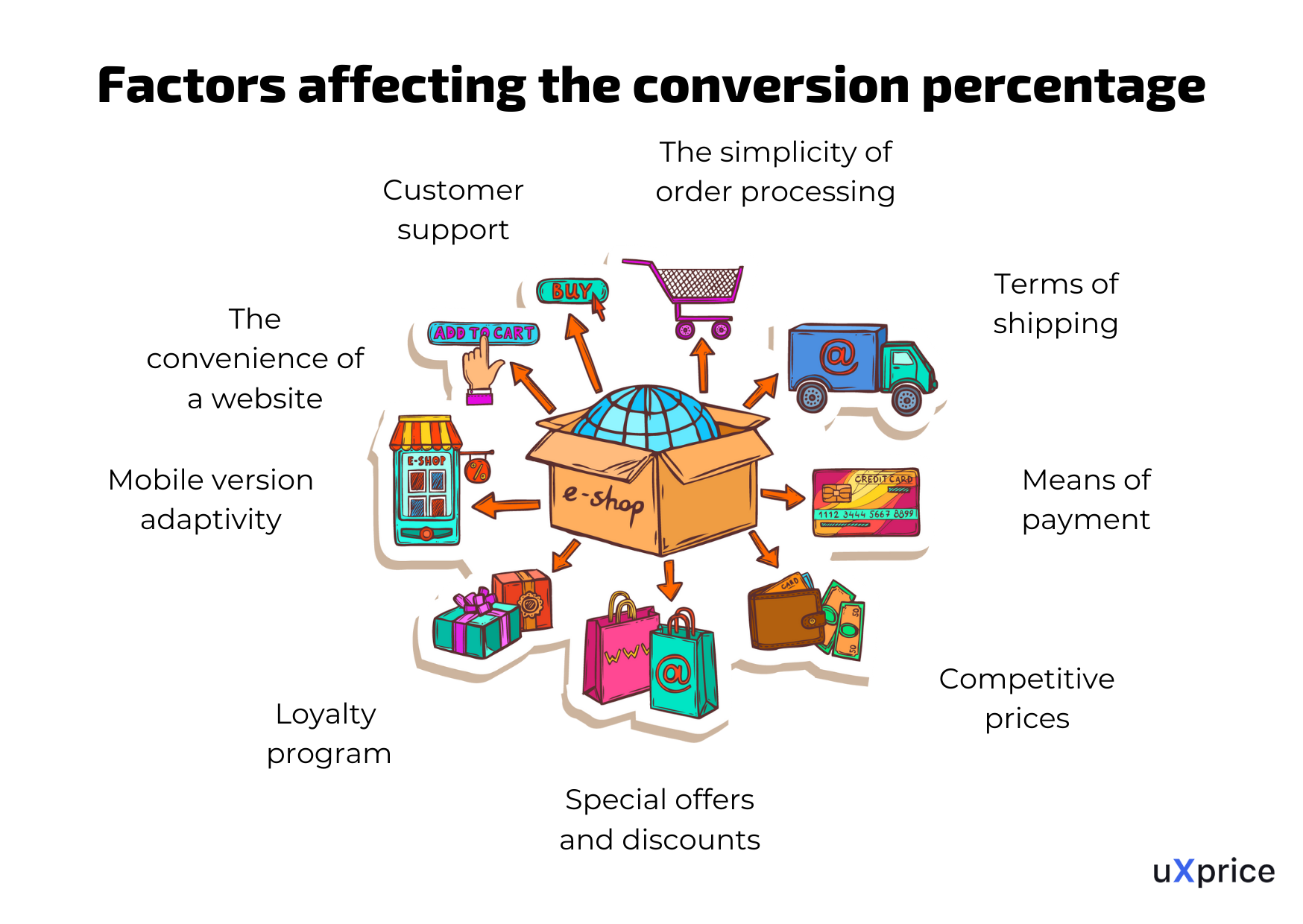
To receive the necessary data, you may use different software: Ahrefs, WhatRunsWhere, Sprout Social, Owletter. Studying the listed above points is important to understand the positioning of your competitors, finding their best traffic sources, and forming your own, even more attractive for users offer.
Monitoring of competitor prices and their analysis may be and should be automated because the use of specialized services will save hundreds of hours needed to get and process the data.
Types of competitors for tracking
It is better to begin the analysis of competitor prices from the formulation of a list of online stores prices of which you would like to track. Bearing this aim in mind, it is convenient to fill in the chart with the division of competitors by types and mentioning important characteristics. That will give you a chance to consider which prices of sellers affect your business most.
There are two classifications of online store competitors: by how long they are present in the market (brand weight) and by their class of goods.
Depending on the brand popularity of online stores, they may be divided into:
1) market leaders — are always on everyone’s lips due to mass advertising (including on TV), have loyal buyers (defenders of the brand) who purchase only from them. The rest of the potential buyers will effortlessly recognize the brand by its logo, name, or other unique details, and enjoys their confidence.
2) average class — have been working in the market for three or more years, moderately use branding ad campaigns, are familiar to their previous buyers by their logo, name, or other distinctive details.
3) novices — have recently entered the market, are unknown to potential buyers, and have little trust among them.
By their class competing companies are divided like this:
1) direct competitors — these are sellers with identical (the same) products that you have, and they use identical promotion channels and are in the same regions.
2) indirect competitors — these are sellers who sell identical (similar) to your goods that may be (not necessarily) in another price niche: either cheaper or more expensive. Also, they may implement other promotion channels but sell the goods within the same region as you do.
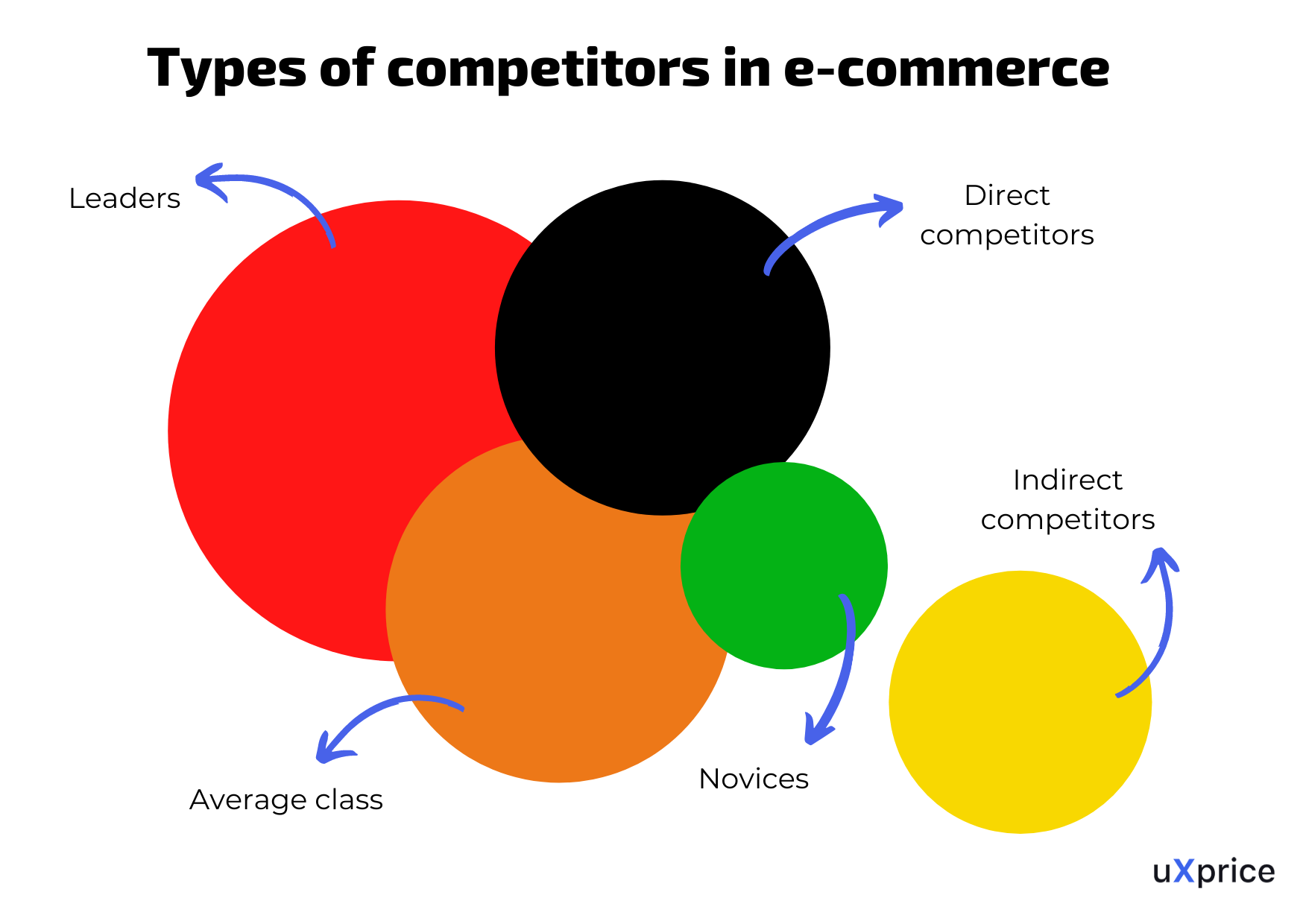
To add objectivity to the analysis, different types of competitors may be selected, but this decision can differ for every separate company.
How to search for your competitors
The search of competitors for an online shop may take a lot of time since there may be several thousand positions or even more. If you do it manually, it is worth starting by entering relevant searches in a search engine.
Thus, if you enter the phrase «Related: URL of the online store» into Google search, in the search results, you will see a list of shops, which are similar to yours. Also, some names of the categories or individual products based on the geography of sales may serve as search queries as well.
What complicates the process is that you need to evaluate to what degree your assortment intersects with the assortment of competitors found. You will also need to evaluate the presence of ads in the traffic source you are using. Since you can compete on SEO (organic traffic), PPC (contextual ads), on separate marketplaces, in social media, or generally on all channels.
It is equally important to consider the competitor type, and in what ratio it is better to add them for tracking. For example, for a specific model of a Samsung phone, you may track the prices on this model only, or you may add a competitive Xiaomi model, having similar characteristics, if you do not sell it.
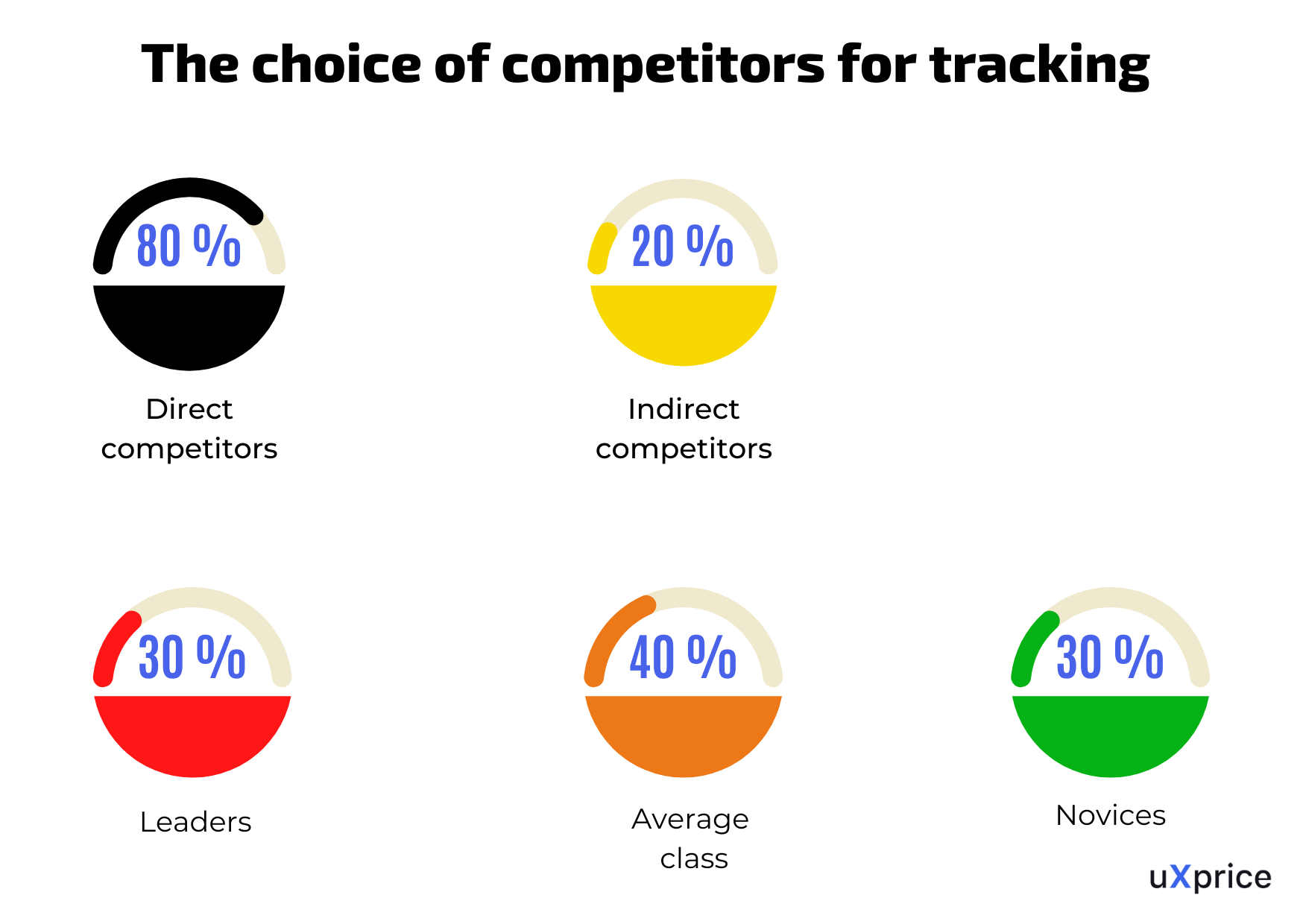
Also, if the brand of your store is well-known and you take the leading positions in the market, you may not track small shops in the regions. And vice versa: if you are a small shop, you should consider that customers prefer famous shops; that is why your offer should stand out advantageously. As a ‘bonus’, you may offer customers a lower price of the product (about 5-7% less), an extra guarantee, or some small gift.
Competitor search automation
The feature of automated selection of competitors in specialized services significantly simplifies the process of competitor search. In this case, the system monitors advertisements of online stores on each of your product position independently. During the search, AI-based machine algorithms are used.
The accuracy of determining competitors by the algorithms directly depends on the correctness of the name of your product and its completeness. For this reason, if sellers and products suggested by the system did not live up to your expectations, it is recommended to optimize the names of your goods before using this feature next time.
Among the found products, there may be identical (the same model) or just similar ones (similar by type but of a different brand). If that is the case, all you need is only to add or delete the sellers found to the tracking. This is how the functionality is implemented in uXprice service:
The main advantage of this method is its simplicity and ease of use. Extensive market analysis, determination of the percentage of the assortment that intersects, and manual search can be forgotten. Even if the number of products that intersect with another shop is only 5, you may track prices on them as well. There are no limitations to the number of competitors for monitoring, and the price collection on the websites of the shops in the list ‘On tracking’ will be automatic.
If among the competitors offered by the system there is no competitor that you need, you can always add him manually by inserting the link. Actually, if you already have selected links for monitoring, the feature of ‘automatic selection’ may not be used at all.
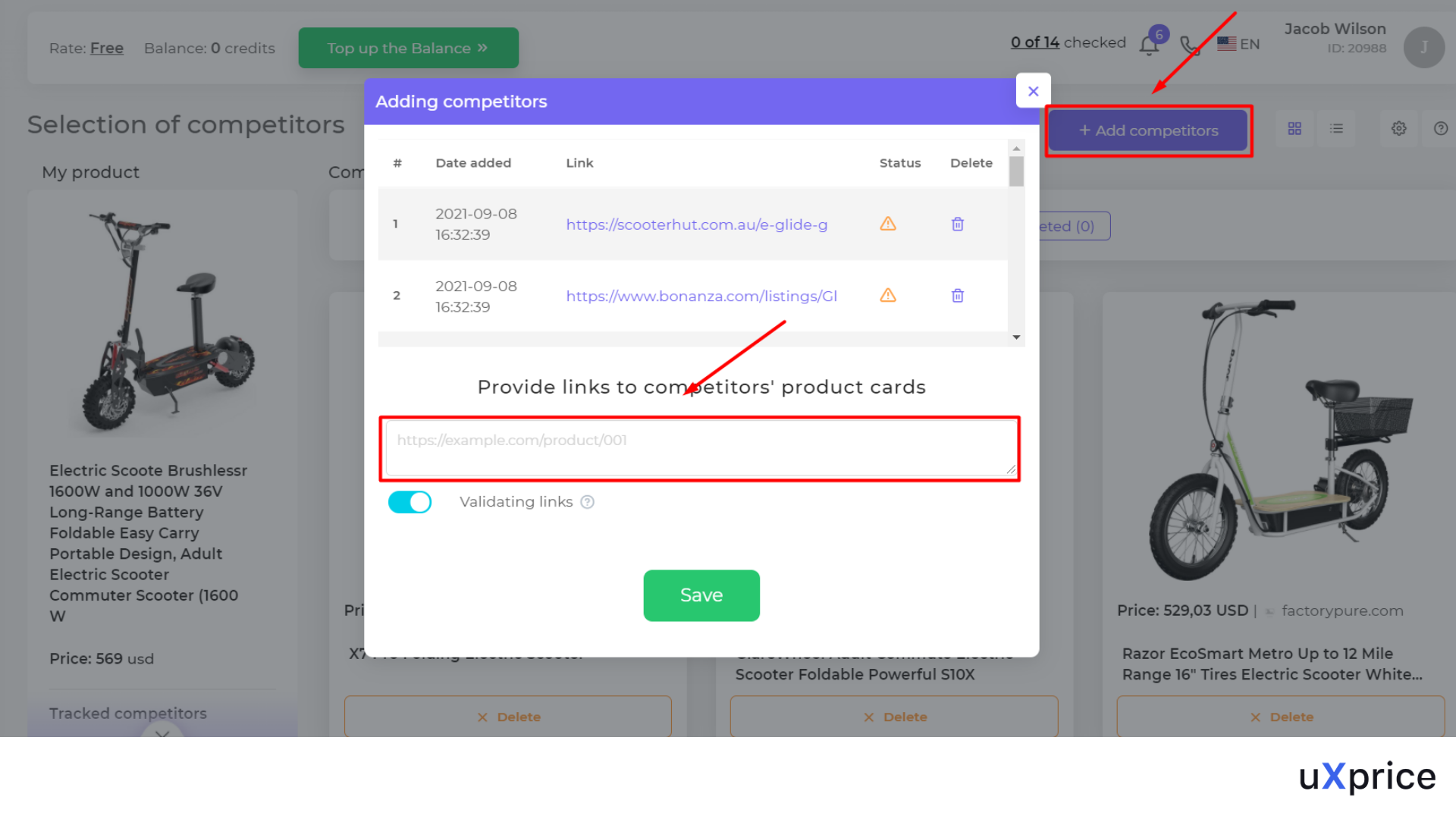
Methods used to collect competitor prices
Similar to competitor search, you may execute pricing collection both manually or by automating it. The manual method is more time-consuming, that is why it can become a basis for new sellers having only several dozens of products in their stores. But even in this case, there is much sense to automate this process if you are planning to develop your shop and its assortment. Since competitor selection and collecting is not a one-time task, and you will need to repeat this process regularly.
The use of a price parser program or services for classical price parsing is an outdated method that people rarely resort to. But still, some shops have been using it for a long time and do not switch to more modern solutions due to a many-year habit. The main disadvantages of this method are problems with setting it up and proxy, the need to adjust the parser to each new shop as well as independent processing of the received data. In this case, you need to analyze the competitor prices on your own.
An optimal solution would be a specialized service. It allows automating the search of competitors, monitor and track their price, and provides ready-made analytics for fast and effective revaluation of goods in your shop. The competitor price analysis is received in the form of a pivot table with required indicators and visual charts.
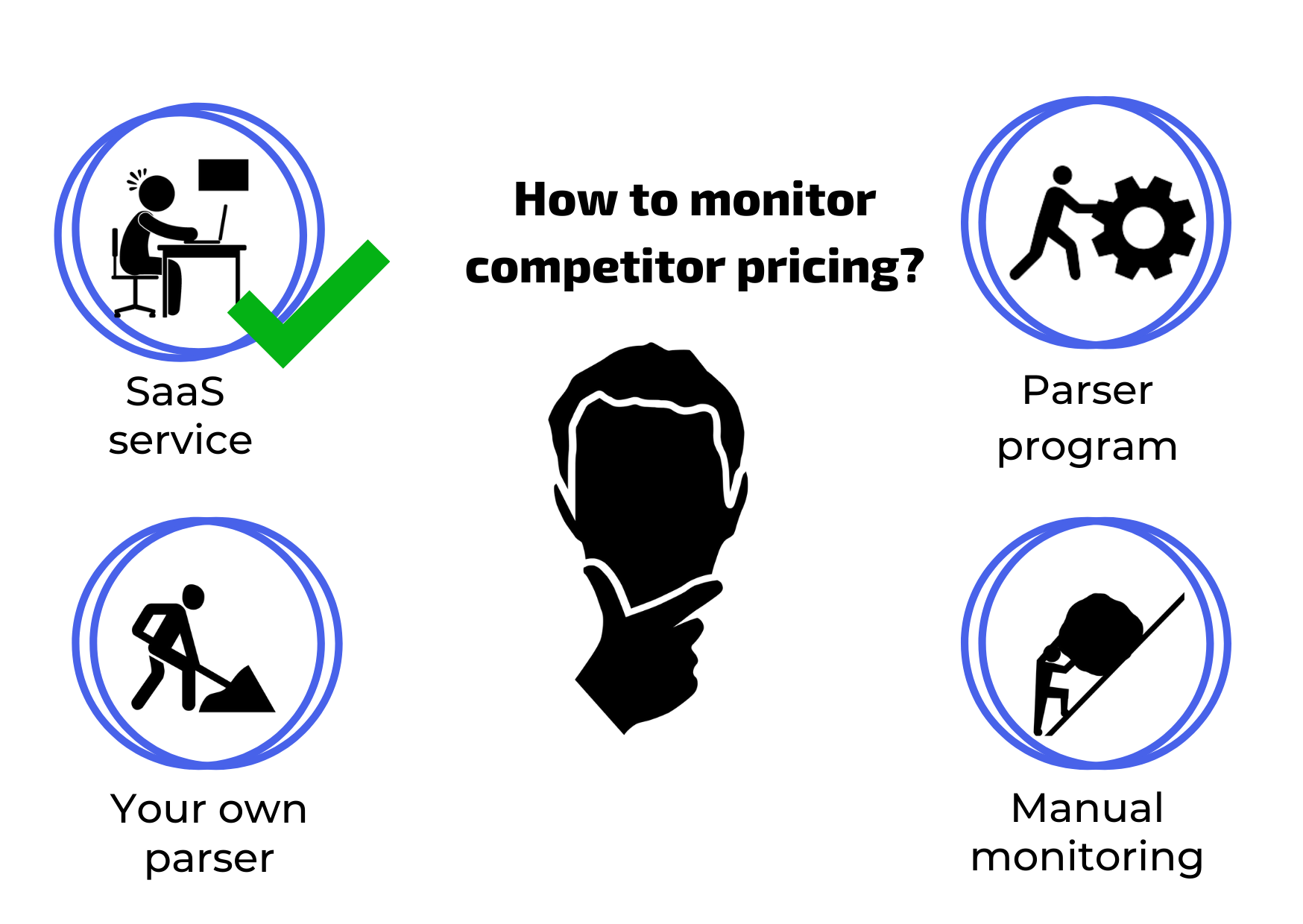
An extra advantage of such platforms like uXprice is saving the history of changes. Monitoring of the price dynamics in the market helps to predict their further changes.
How to use competitor price and goods analysis
Competitor price analysis is a pivot table with final metrics on prices collected from competitors, based on which an individual pricing strategy is formed. Regular market monitoring, price comparison, and tracking of the changes on competitor goods’ prices allows to identify the groups of products that are not sold due to their high price, as well as positions the price of which can be increased without a decline in sales.
According to the results of the market price monitoring, you will be able to estimate the level of competition by categories and every single product to:
1) set the prices on your goods correctly;
2) increase sales and profits;
3) evaluate supply and demand;
4) predict sales;
5) procure goods in necessary volumes;
6) sell out the remaining goods in time;
7) improve the assortment;
8) ask reasonable discounts from suppliers (or change them on time);
9) know the leaders of the market in various categories;
10) develop a successful marketing strategy for promoting the brand of your store.
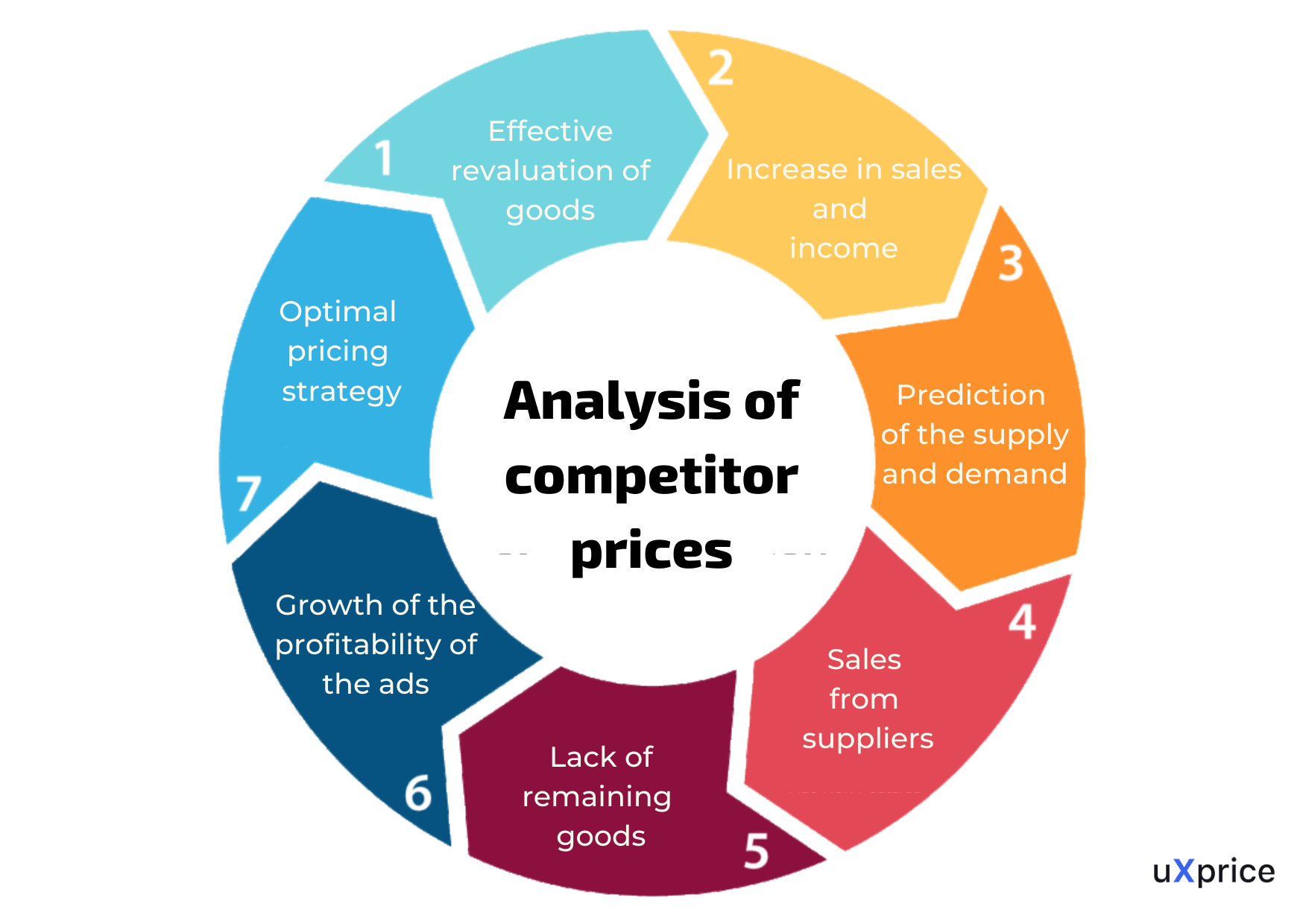
The analysis of competitor pricing also opens new opportunities to increase the profitability of advertising campaigns up to 10%. A study of a structure of ads budgets indicates that the prevailing part of the budget is spent on promoting products having a non-competitive price that don’t bring sales and reduce the overall profitability. The correct revaluation of goods prevents such a situation and increases the profit.
Competitive pricing and goods revaluation
If you have defined competitors and monitored their prices, now you need to make an analysis of the collected data and revaluate your products. In specialized services, there is an appropriate report for that; this is how it looks in uXprice service:
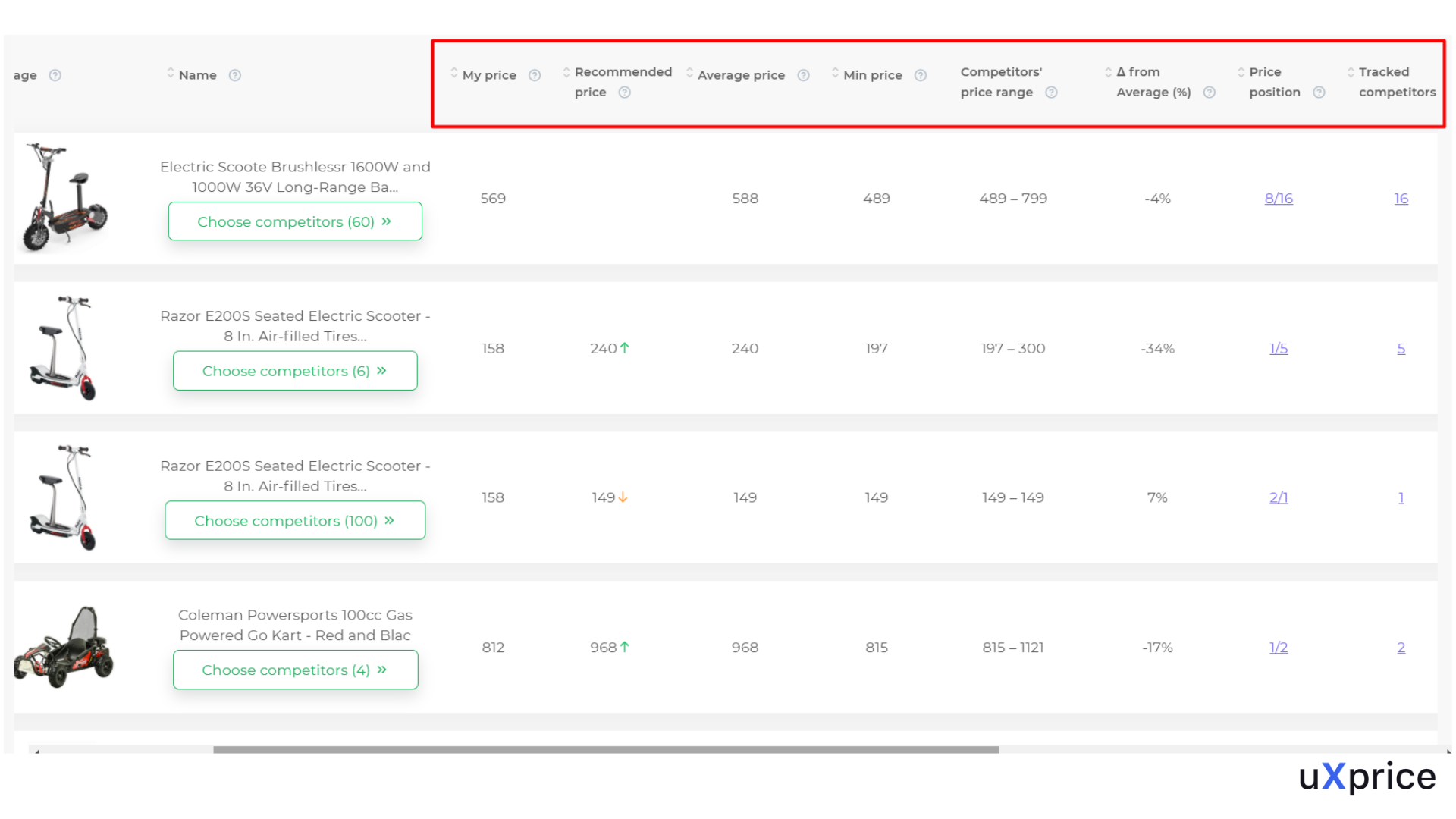
To make the use of the report convenient, it includes an ID of your product, its name, cost, and photo; there is also an option to adjust the columns. The comparative analysis of competitor pricing represents such indicators:
1) average market price
2) median price
3) minimal price
4) maximum price
5) the number of competitors
6) pricing position
7) the price range of competitors
8) the difference between your and average price, in %
9) the difference between your and minimal price, in %
10) the difference between your and median price, in %
11) recommended price
Having taken the above indicators as a basis, you may set a formula to revaluate your goods. It may be done on the page Pricing strategy. You may also pick other pricing strategies from the list: Minimal price, Median price, 10% lower average, 10% higher average, average market price.
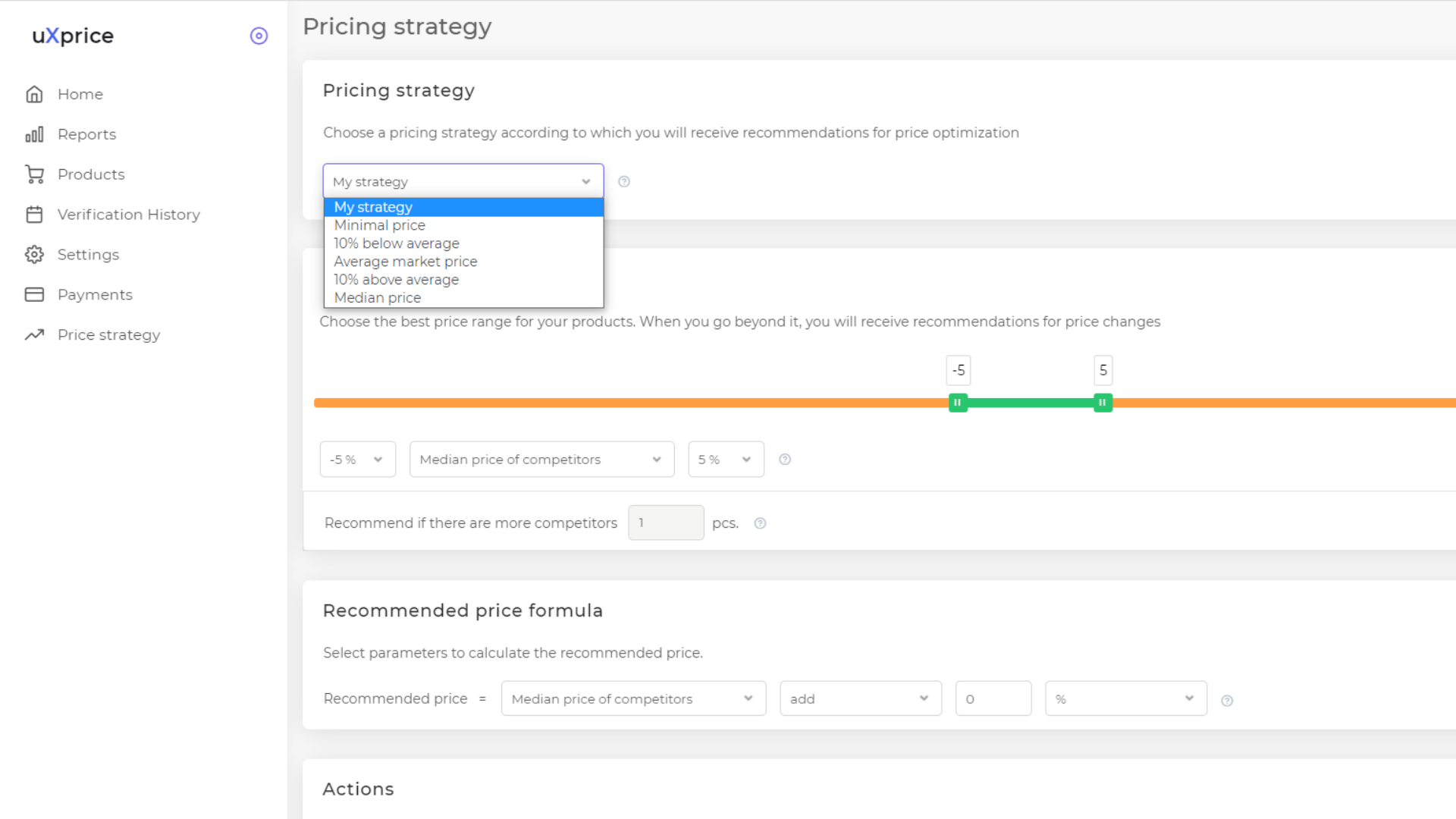
Defining a price, you should necessarily include your costs, desired margin, and a level of competition. If it is low (2-3 competitors), start from the maximal markup. If the number of offers is high, focus on average or median price. For example, you may set a formula according to which the Recommended price will be equal to a median one + 5%.
The report contains the price only of those competitors who have goods in stock. The new price calculated via this formula is shown in the column Recommended price in this very report:
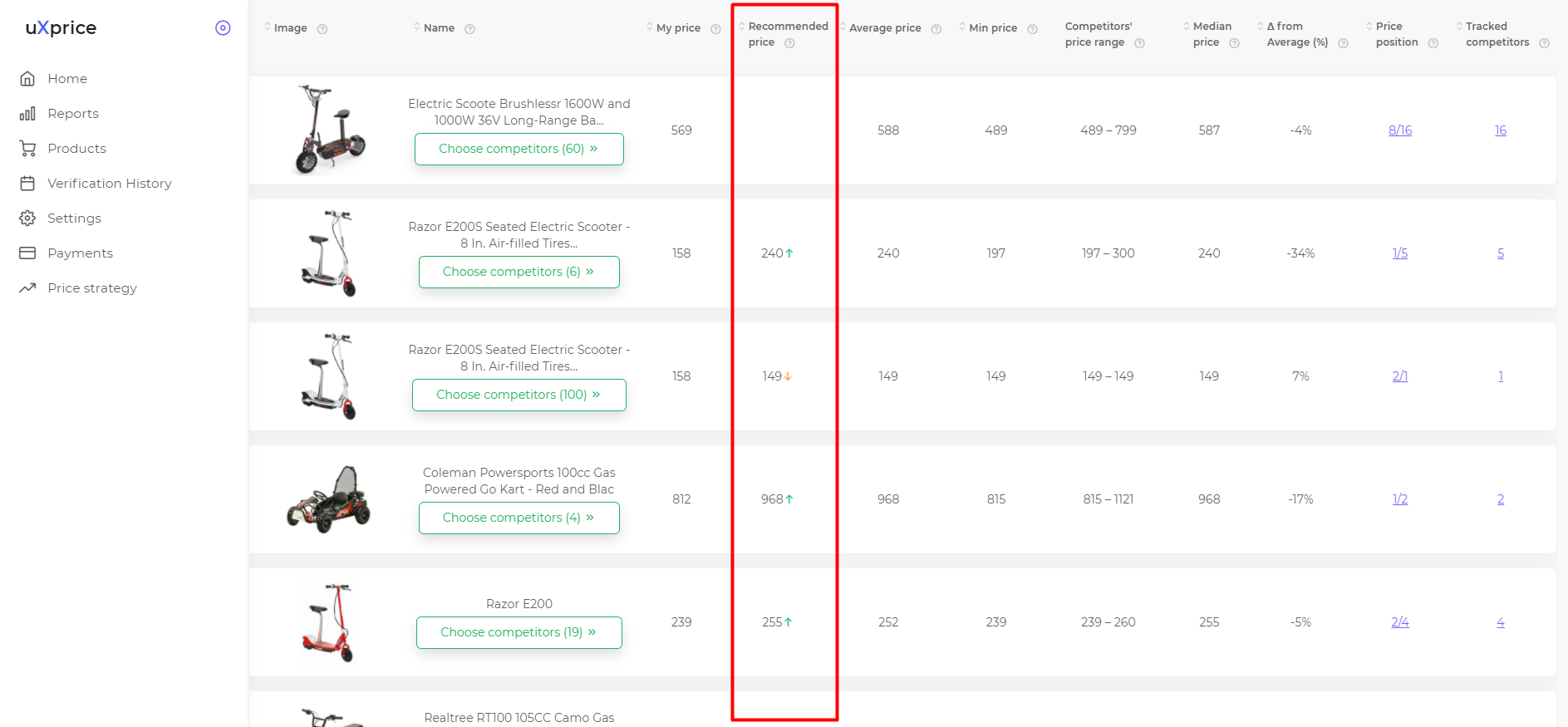
Recommended price is an optimal price for each trade item according to your pricing strategy aimed at maximization of profits both in the short and long run. It is vital to understand that optimal does not stand for minimal. The info from our researches allows us to state that the most profitable items are the ones having the price 10% lower than average in the market. But this indicator may vary for different niches, and this should be taken into account.
Thus, when revaluating your products, you need to consider the procurement price, final expenses, and offers of competitors – that is what recommended price accumulates. After the prices have been changed, it is essential to evaluate the dynamics of sales and make necessary adjustments. Continuous monitoring of sales will allow your business to remain flexible.
Types of competitive pricing strategies
A competitive price is not a specific number; it is rather a price gap within which the values remain competitive. Choosing the value from its range, you may follow one of the five main types of competitive strategies described below:
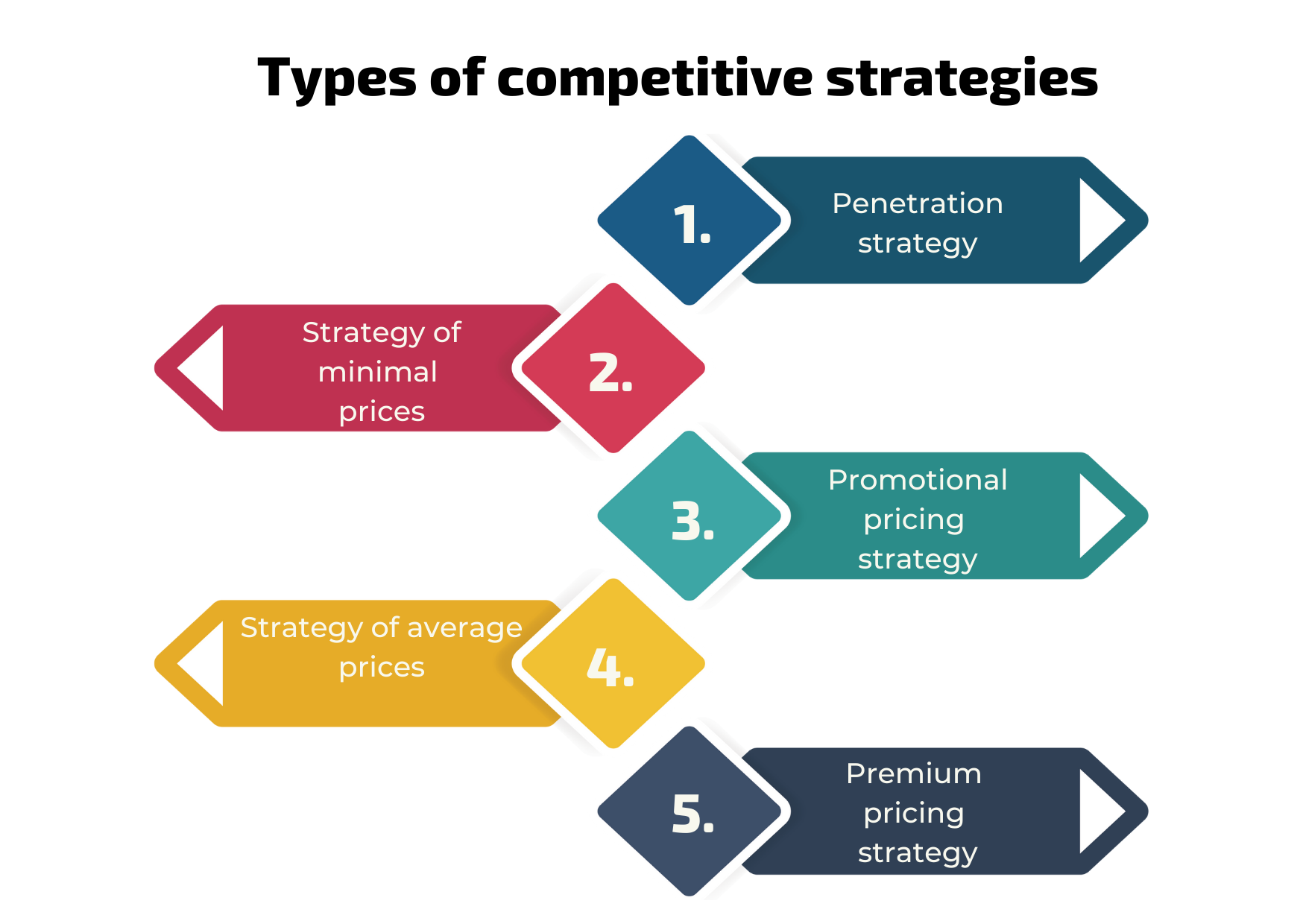
1) Penetration strategy
This pricing strategy implies that your products are sold at a price that will attract customer’s attention. For example, a new online store may set the prices on goods lower than market average prices to distract customers from competitors and make a statement. This will allow attracting first buyers sensitive to the price.
2) Strategy of minimal prices
There are companies that want to occupy a niche of minimal prices by setting the prices lower than competitors do. The goal of such policy is to realize the goods in bigger volumes due to a lower price. Such online stores get high income precisely as a result of huge sales volumes even though the profit per item is not that big.
For example, the marketing strategy of IKEA contains such a term as ‘hot dog’. That is an idea of the network founder Ingvar Kamprad that helps to maintain IKEA the reputation of low prices and at the same time increase profits in shops. The essence of it is to find consumer goods, the cost of which can be significantly reduced to further sell them at a minimal price compared to competitors.
The formula of perfect cost for such goods is 3:1:1, where 3 stands for production cost (procurement), 1 is taxes, and 1 is profit. While the cost reduction is possible due to big volumes of production, design simplification and materials’ economy, as well as the approach ‘take it and assemble it’ (buyers put the furniture together on their own).
The name ‘hot dog’ is not accidental either. The first goods intended to attract customers and reinforce the feeling of the cheapness of prices actually were hot dogs. IKEA sold them for 5 kronor while competitors did for 10-15 kronor.
Based on the formula above, the profit was only 1 krona per 1 hot dog. But due to a huge volume of sales, the general profit significantly exceeded the profit of products, the margin of which was higher. Having received such an effect, enterprising Ingvar Kamprad decided to scale his idea, so nine similar products were found. The idea was so successful that later the number of ‘hot dogs’ sold in the store chain simultaneously increased to 20.

Ingvar Kamprad says: ‘Our pricing policy is unchangeable. The main thing is not to scare away customers with too high prices. Economists constantly say that you should increase the Gross Margin Rate… If you ask me, that is something abstract and unclear. Everything we are interested in at IKEA is how much money is left in our pockets after the end of a season only.
I always search for new ‘hot dogs’, and many ikea members help me with that. Now an adapter that costs 50 kronor at our competitors’ store is sold for 20 kronor at our shop. I think that this ‘hot dog’ will be sold millions’.
One more similar approach is selling ‘popcorn’ – goods are sold at the lowest cost, do not bring profit or even cause losses, but are kind of a magnet to attract customers to the shops. There is an expectation that together with the purchase of ‘popcorn’, customers will also buy other goods.
But generally, two approaches, both ‘hot dogs’ and ‘popcorn’, are based on the strategy of minimal prices. Such a strategy may be particularly effective when a significant market segment is sensitive to the price, or the overall expenses of the company are lower than expenses of competitors. One of the possible negative scenarios that a lower price (compared to competitors) may lead to is the beginning of ‘price wars’.
3) Promotional pricing strategy
If you have a large online store and an appropriate niche, this strategy is capable of improving your sales greatly. It also implies the reduction of a margin per unit of product but provides a significant increase in sales and overall income. You must have seen the realization of this approach in typical supermarkets when buying two pieces of product, each one of them costs substantially cheaper.
For instance, you earn 2,5 dollars out of a tube of toothpaste being sold for 5 dollars. Having reduced the cost of one toothpaste to 4 dollars when buying two pieces, you will earn 1 dollar less from each piece but will be able to increase sales twice. As a result, you will get a better profit. Thus, if before you sold 100 tubes, now, having sold 2 times more, your income will be 50 dollars higher:
Regular prices: 2,5 х 100 = 250 $
Promotional prices: 1,5 х 200 = 300 $
4) Strategy of average prices
It implies regular tracking of a maximum number of competitors in the market to receive objective data. The monitoring results are used to set your prices at the level of average market price plus or minus 10% (depending on the price niche and expenses). One of the most widespread variations of this strategy is the calculation of prices based on the median price in the market.
The strategy of the average market price is one of the most popular and beneficial for most retailers.
5) Premium pricing strategy
When choosing this strategy, the pricing policy is built on the brand value and high quality of products offered. Based on this, the competition takes place between identical premium brands. Budget and cheap analogs are not taken into account.
Choose a strategy that fits the realization of your financial goals at this stage. The pricing strategy is not a constant, it may change, it may be different for different groups of products and, if needed, be combined with other strategies over time.
Advantages of competitive pricing
If you have been engaged in online retail for years, you must have faced a decrease in sales many times. The main reason for such reductions is the dumping of prices by competitors. Market monitoring and analysis allow tracking such decreases, predict demand, and stabilize sales.
When you set the cost of the goods using any other method, this may turn into a full fiasco, but not in the case with a competitive price. It is called ‘to learn from others’ mistakes’ – somebody cannot sell the product because of an overstated price, somebody loses money selling for cheap, while you own the situation in the market and can maximally benefit from it.
After the stage of competitor choice is done, it will take a little time to change the prices on the products since algorithms do all the work. And the basis for such changes is a fundamental market analysis on each trade item you have, which makes the revaluation truly efficient.
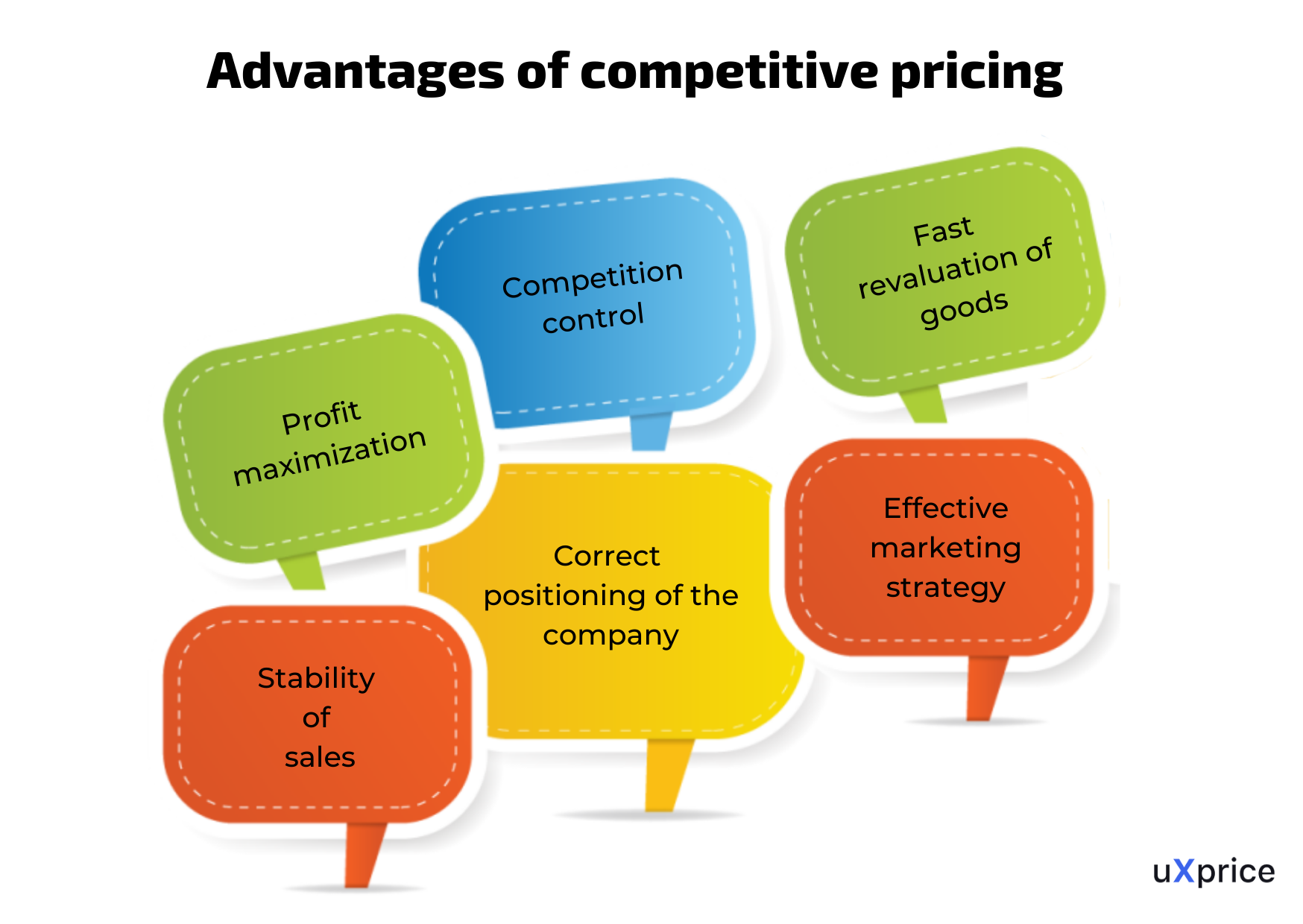
The benefit of historical data for increasing the profit of an online store
Approximately a few months after you have started tracking and price analysis of competitors, you will be able to make conclusions about their behavior models.
The history of analysis will show:
1) how often competitors change prices
2) how often they have special offers
3) which trade items (product categories) have discounts more often
This information will assist you in defining the pricing strategy of online shops you compete with and understanding at which stage of lifecycle each your trade item is.
Product life-cycle is a period from the entry to the market to the exit from it, between which the most prosperous for sales periods are stages of growth and product maturity. In order to avoid losses, it is vital to define the decline stage, sell out the remaining goods and stop to procure new goods of this type.
How often it is required to conduct competitor pricing analysis and goods revaluation
The frequency of goods revaluation depends on the peculiarities of a business. For example, procurement in foreign currency, while the rate is not stable. In this case, it makes a lot of sense to include a bit increased currency cost to expenses so that you can avoid everyday revaluation in those days when the currency is within a planned budget.
As for competitor pricing tracking, you need to consider the level of competition in the market and sellers’ activity, presence of staff and time costs for these tasks, expected and a real effect from revaluation. It takes 1-2 months after the start of work to successfully find the optimal balance between the above factors.
If you are interested in world experience in this topic, the speed of price changes on Amazon reaches six times per hour. At the same time, online shops in the CIS region revaluate prices not more than once a day, but usually 1-2 times a week. More stable niches do that even more seldom – only 1-2 times monthly. Such a significant difference is related to the fact that technologies lag behind, and there is weak automation of goods revaluation. But the trend has been set, and owners of our online stores are actively learning from the experience of western colleagues to increase profits.
How to choose a service to analyze competitor pricing
New online stores are emerging daily; the existing ones are developing and growing, and the assortment is also changing and revaluating. That is why competitor price analysis is not a one-time procedure but a regular process that requires a well-specialized service to allow you to monitor the situation and react to changes in time.
The question of the price analysis tool should be taken seriously. The basis for the competitor pricing analysis is the monitoring of the market of prices. The higher number of competitors you monitor, the more objective the final data you receive in the results, and the higher the efficiency of goods revaluation will be. Since monitoring and tracking of prices are not an end in themselves: to increase sales and boost profits of the online store, the received data must be actively used.
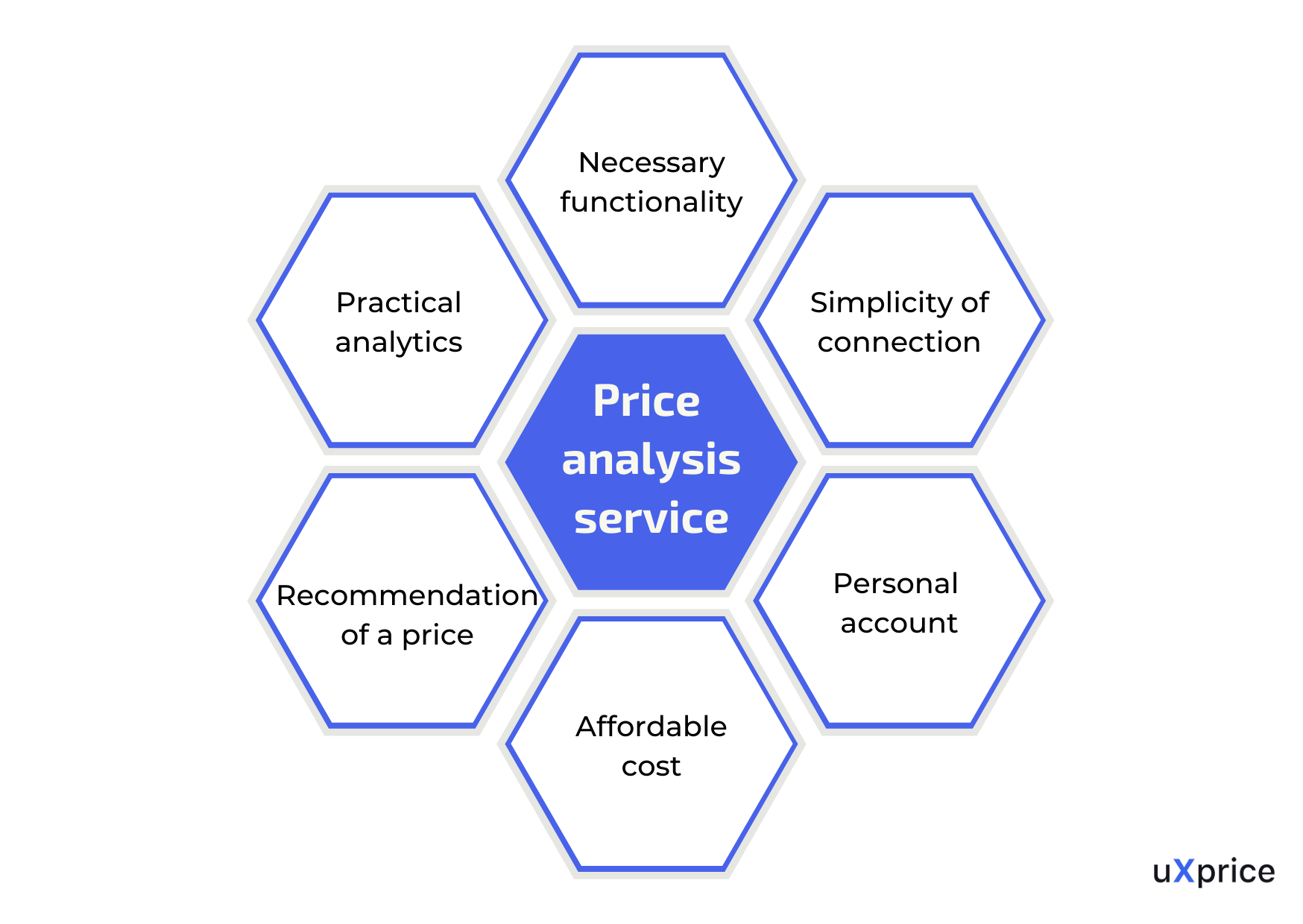
When choosing a service for monitoring and analysis of competitor prices, pay attention to these points:
1) The simplicity of connection. The perfect scenario is when you can start working without integration and demanding connections.
2) The presence of a personal account and UI convenience. If before the start of the work it is required to spend many hours on studying, it is better to put this option aside during the selection stage. In the future, it will result in employees’ slow pace and mistakes as well as extra expenses when teaching new staff.
3) The cost of use. The optimal option is the availability of tariff plans depending on the needs. The worst option is payments for each new online store and limitations on the rotation of goods (it is essential during frequent changes of assortment and appearance of new items).
4) Required functionality. If there is a chance to test the service, you should definitely use that opportunity. Pay attention to how simple it is to add competitors, track their prices in the future, how fast the data on the availability of your and competitors’ products updates, and pricing recommendations.
5) Practical analytics. The presence of customizable accountability and required metrics in the pivot tables are the basis for further use of collected and processed info.
6) Recommended price. If these metrics are available and there is a possibility to configure your own rules of pricing, which allows you to significantly save time spent on goods revaluations.
Conclusions
The competition in online retail is very different from the offline equivalent. Essentially, it is transparent, which allows customers to find the best offers on the Internet within a few minutes. In return, as they have a great choice, customers become more demanding and picky, more sensitive to the prices. And this situation forces the owners of online stores to monitor the market and reckon with competitors.
Today competitive pricing is a compulsory strategy, allowing to outrun competitors within a fast-changing environment of e-commerce. Use it to increase your sales, attract new customers, and grow profitability.





